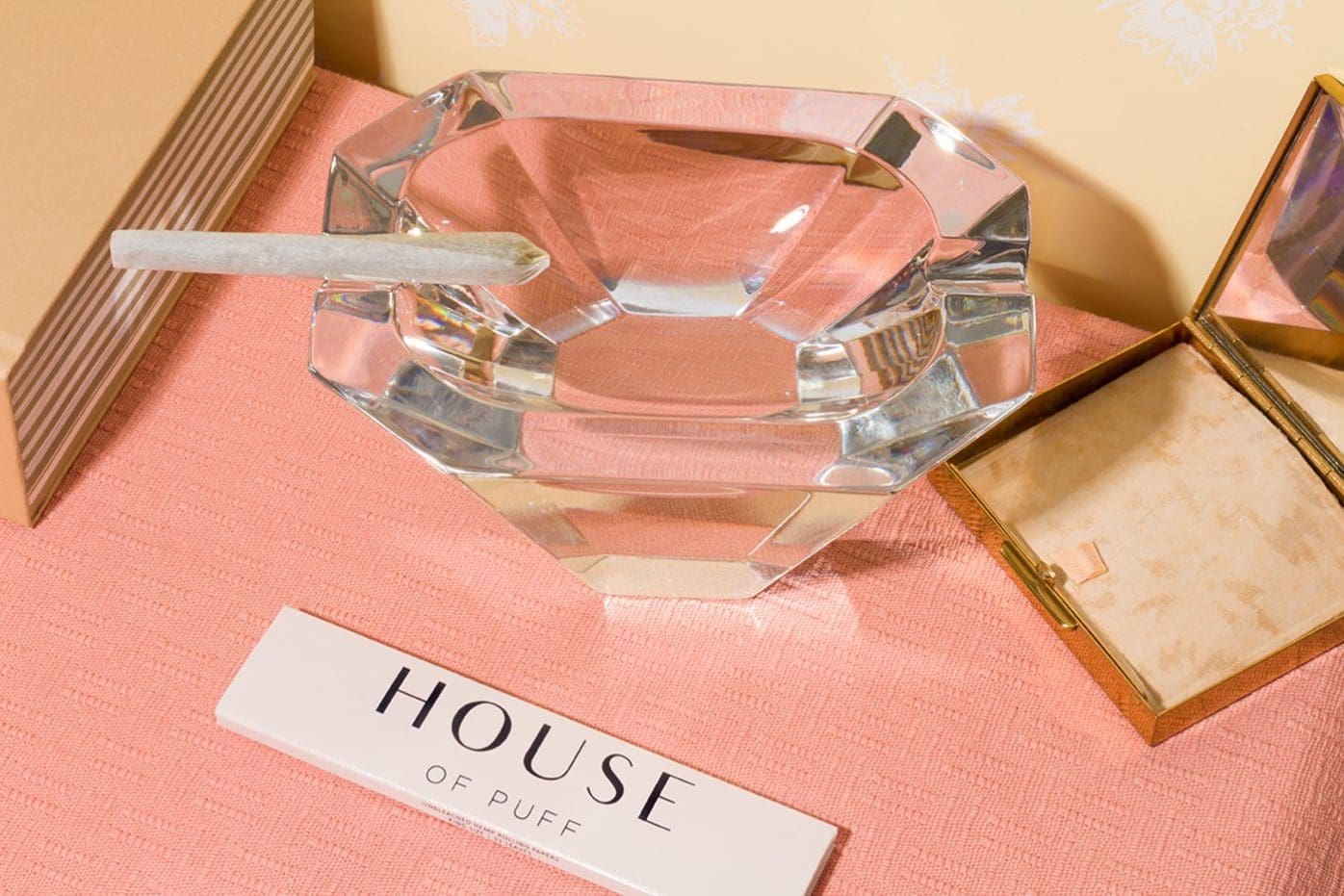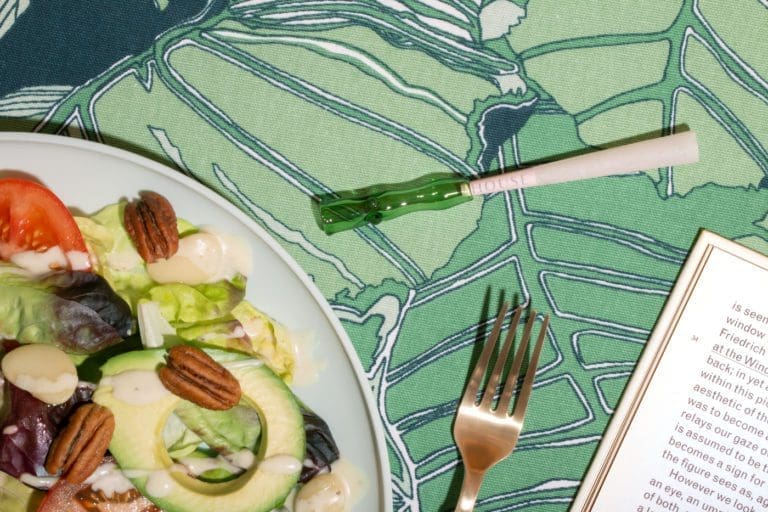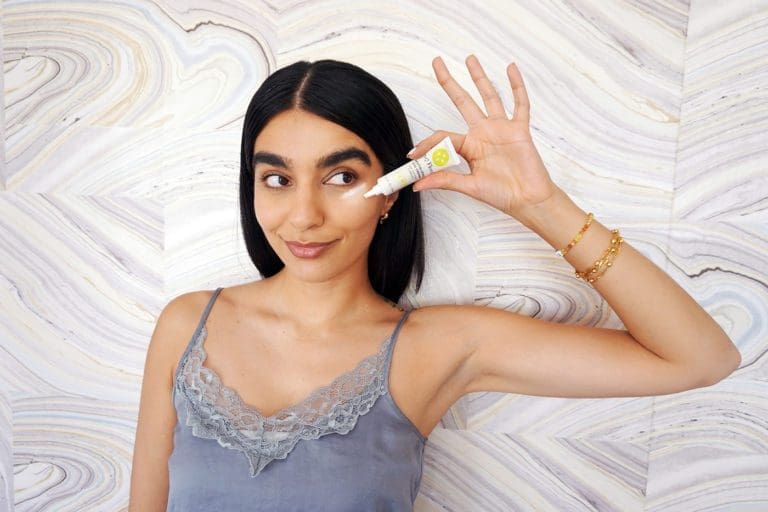Cannabis Facts: the 53 Terms You Need to Know
- Here’s your guide to the most important cannabis facts you need to know to navigate the current culture.
- From weed slang to scientific terminology, we’ve got you covered.
- So bookmark this page to stay in the know as cannabis facts evolve!
13-minute read
The cannabis FACTS everyone needs to know
We’re constantly learning new cannabis facts. And, especially if you’re new to cannabis, tuning into the lingo can be a challenge. Plus, with legalization opening up whole new avenues of research, we bet that even cannabis OGs will wonder about some of the new ones. In such an evolving landscape, there’s so very much to know. So keep your vocab up-to-the-minute with the following glossary of cannabis facts and weed slang.
420—the cannabis holiday
April 20 is better known as 420 in the cannabis community. Many people see it as a day to light up and celebrate the plant. But, why April 20? One theory is 420 started in the 1970s as code for a cannabis meet up. Every day at 4:20PM, they would gather for a smoke. The ritual spread and was eventually memorialized with widespread homage every April 20th. Regardless of the holiday’s origins, it’s now a day that cannabis lovers look forward to each year.
Blunt
Some people assume a blunt is the same as a joint. While they’re similar, they’re not the same. A blunt is a hollowed out cigar that you fill with cannabis. That means you’re using its tobacco leaf wrap instead of other kinds of traditional rolling papers to house your smoke.
Bowl
In cannabis terms, a bowl is the part of a bong or pipe that holds your cannabis. Pack your bud into your fave pipe or bong, and you’re ready for a fantastic smoke sesh.
Bong—classic weed slang
Bongs are a classic cannabis accessory you’ve probably used or at least have seen—maybe in your college days. They’re water filtration devices for smoking your favorite strain. While they’re bigger and not as portable as other cannabis products, bongs can be useful. Especially when you’re sharing with friends. One thing we love about water bongs is that they can cool your smoke more effectively than other consumption devices. But, we have to admit, we hate cleaning that dirty bong water!
Broad spectrum
There’s so much to know and love about cannabis. One thing is that not all cannabis products are the same. Broad-spectrum cannabis products mean that you’re getting more of the plant’s compounds—not just one active ingredient. You’ll see this a lot with cannabis products. The point of broad spectrum cannabis products is to get the benefits of many of the compounds within the plant, not just a single cannabinoid.
Bud
Bud is the part of the plant that has the cannabinoids in it. It’s not the stem or the seeds. You want to consume the bud, or the flower. The best cannabis is a firm, slightly spongy solid bud that looks like a beautifully trimmed topiary. That’s good bud!
BUDDER/Badder/Batter
Budder, badder, batter. Call it what you want, it’s all the same thing. Budder is one of the most common cannabis concentrates. What differentiates budder from other concentrates is its malleable, cake frosting-like texture. Think of it as the fondant of cannabis. Budder doesn’t always look the same. Its look and texture depend on the extraction method used. Sometimes it’s sticky to the touch. While other budders are more dry and crumbly. But its color will tell you a lot. The brighter yellow it is, the better its quality!
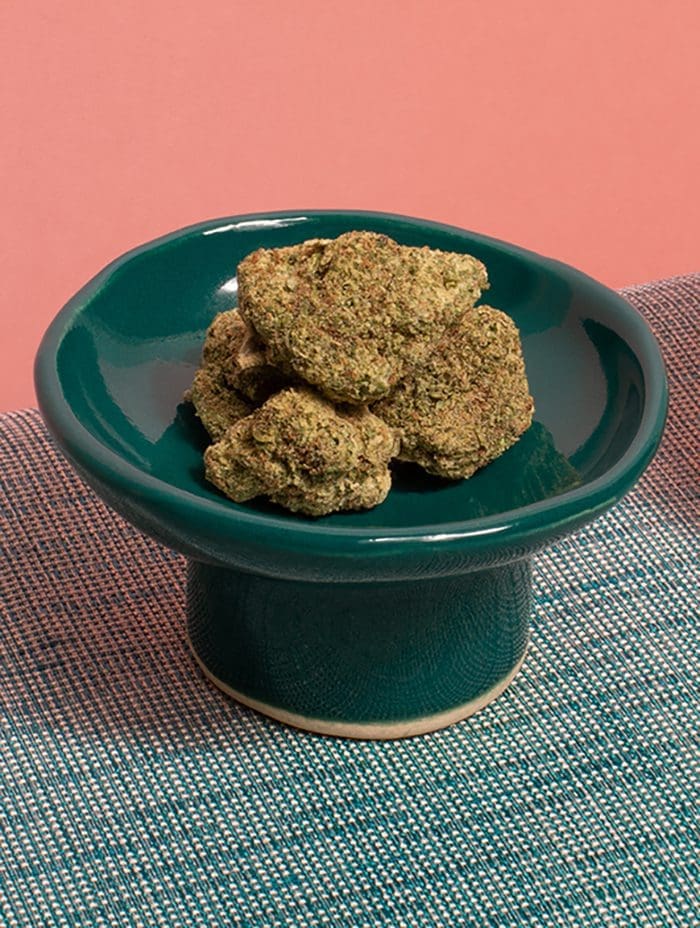
Budtender—a Great source for cannabis facts
Think of a bartender, but in a dispensary. Budtenders are the people serving you at the dispensary. The best budtenders can impart a wealth of knowledge about cannabis facts. Budtenders can be an immense help in choosing which products are the best for you.
Cannabinoids (kUH·naB·uh·noyds)
Have you ever wondered what makes cannabis, well… cannabis? You can thank cannabinoids. They’re the active chemical compounds in the plant, like THC and CBD. In combination with terpenes, they’re what make different strains of cannabis produce various effects. There are 100+ known cannabinoids that naturally occur in the plant.
Cannabis (kaN-Uh-bis)
Cannabis is the plant we all know, love, and appreciate. In weed slang, it’s also known as marijuana, mary jane, and pot. Cannabis is the scientific name for the hemp plant. The cannabis plant is known for its potential health and wellness benefits as well as for the psychoactive effects it creates. Why do we prefer cannabis to the more common ‘marijuana’? Because that term has derogatory connotations that were purposely developed to demonize the plant with race-baiting.
CBD
Short for cannabidiol, CBD is one of the most well-known cannabinoids. It’s fully legal in the US because it’s non-psychotropic. That means CBD isn’t intoxicating. People often use CBD as a sleep aid, for anxiety, pain, and to manage epilepsy. CBD products range from flower and edibles to skincare products and oils. A growing number of people swear by CBD for its potential health and wellness benefits.
CBN—one of the trendiest new cannabis facts
CBN, or cannabinol, is a lesser recognized cannabinoid. It’s only mildly psychoactive and is derived from THC. Back in the late 1800s, CBN was the first cannabis compound to be isolated from cannabis extract. But we’re just starting to learn more about its potential benefits, including its possibilities as a sleep aid.
Concentrates
Cannabis concentrates are just what they sound like. They’re made by concentrating cannabinoids into much higher potencies than occur naturally in the plant. To make concentrates, processors extract THC, CBD, and other cannabinoids from the cannabis plant. The most common concentrates are shatter, crumble, budder, rosin, distillate oils, live resin, and crystalline.
crossfading
In cannabis lingo, crossfading typically means to combine a THC high with an alcohol buzz. For instance, a couple glasses of champagne while you’re waiting for your edible to hit. If you do it right, the buzz of the champagne will be fading as your edible high starts to take effect. Keeping moderation in mind, we’re enormous fans!
Crutch/crutch card
Unless you’re really into weed slang, you might not know what a crutch, a crutch card, or a tip is. Or maybe you do, just not by name. A crutch is just thick paper card stock that cannabis smokers roll up to use as a filter for their joints. While some cannabis lovers use any card stock that’s laying around (e.g., old business cards, etc.), we recommend only using crutches that are specifically made for smoking. Otherwise, you could be inhaling toxins like ink and acid that are on or used to process the paper. Crutch cards are often sold with rolling papers. We especially like organic hemp crutches/tips.
Dab/Dabbing
Dabbing is a method of cannabis consumption where a “dab” or small amount of cannabis concentrate is heated to create an inhalable vapor. To dab, you need special dabbing accessories. Since cannabis concentrates are much stronger than flower, if you’re new to cannabis culture, start low and go slow to avoid dosing yourself too heavily.
Dispensary
Cannabis culture wouldn’t be what it is without dispensaries. These are stores where you can legally buy cannabis products and accessories. Right now in the US, dispensaries are divided up into medical, adult-use recreational, or a combo of both. Medical dispensaries usually feel more like just the pharmacy part of a drug store—with everything behind the counter. Adult-use recreational dispensaries usually feel more like a regular drugstore, with THC behind the counter and other browsable products in the store. As cannabis culture becomes more normalized, we love all the dispensaries cropping up that feel like high-end boutiques, instead of just Walgreens. Regardless of which style you’re into, at dispensaries you can buy cannabis edibles, topicals, tinctures, and flower. You’ll also find accessories like pipes, rolling papers, and more.
Edibles
To put it simply, edibles are food and drinks that contain cannabis. Brownies are the OG edible. While a good cannabis brownie is still one of our favs, the edibles game has so much more to offer you. From cannabis gummies and chocolates to condiments and drinks, there’s an ideal edible out there for everyone.
Endocannabinoid (en·do·kuh·naB·uh·noyd) system
Let’s enter the scientific realm of cannabis facts for a minute. The endocannabinoid system, or ECS, plays a major role in how cannabis consumption affects the body. We know they didn’t teach you about it in health class (or probably in med school, for that matter). But the ECS is real. It’s a system of receptors throughout your central and peripheral nervous system that helps regulate your bodily functions by adjusting the flow of neurotransmitters. These neurotransmitters are called endocannabinoids, and they bind to cannabinoid receptors. This binding process is how cannabis interacts internally after consumption to create its effects on you.
Entourage Effect—one of our fave cannabis facts
It takes a bunch of different compounds working in tandem to create the sensations associated with a cannabis ‘high’. As far as we know, THC is the primary cannabinoid responsible for the psychoactive effects of cannabis. But THC isn’t the only compound that contributes to these feelings. The entourage effect is how all the elements in each cannabis strain work synergistically to produce the overall effects of cannabis. Basically, the theory is that the whole of cannabis is more beneficial for you than any of its parts can be separately.
Extract
Cannabis extracts are types of cannabis concentrates. But they’re not exactly the same as concentrates. Extracts are created by using a solvent to concentrate the active compounds while getting rid of the rest. Some of the most common solvents used in extraction include chemicals like propane, ethanol, and CO2. Not to judge, but we’re personally not stoked about ingesting harsh chemicals. Dabbing is the most common way of consuming cannabis extracts.
Flower—elevated weed slang
Another word for bud, flower is the part of the cannabis plant that you consume. It’s the part that includes the trichomes and resin where the bulk of the cannabinoids are produced. So it’s often sticky. In fact, the stickier, the better. Did you know that the flower is also the reproductive part of the plant? Pretty cool, right?
https://www.youtube.com/watch?v=iS0W3btS3cY
Full Spectrum
Full-spectrum is about getting all the compounds in cannabis working together in concert—just like nature intended. Cannabis products that are full-spectrum contain all of the naturally existing cannabinoids in the plant. The theory is that all of these compounds work better together. So when you consume full-spectrum cannabis products, you’re getting benefits from all the compounds, not just one cannabinoid or another. To get the most out of your cannabis consumption, give full-spectrum cannabis products a try.
Grinder
A good grinder is a wonderful tool for anyone who smokes cannabis or makes homemade edibles. Just as the name implies, a grinder is a tool for grinding cannabis flower to prepare it for the most efficient consumption. Did you know that you should use a coarser grind for edibles and a finer grind for smoking? Also, if you don’t own a grinder, you can use common kitchen tools to achieve a similar effect.
Hash—one of the most ancient cannabis facts
Hash—short for hashish—is the waxy product formed when you concentrate the resin glands, or trichomes, of a cannabis plant into a solid. Hash often contains plant material, but the terpenes are what give this concentrate its distinct taste. You can smoke hash in a pipe or a bong. Or you can add it to your joint or edibles to boost your high. The history of hash dates back thousands of years, with its roots tied to the cultures in Morocco, India, Afghanistan, Pakistan, and Iran.
Hemp—one of the most misunderstood cannabis facts
The English name for the cannabis plant is hemp. But, in the US, the term is more commonly used to refer to industrial hemp. That’s cannabis that contains less than 0.3% THC and, consequently, isn’t psychotropic. Most CBD products are made from industrial hemp. Prior to hemp’s demonization in the early 20th century, it was a major crop with an enormous variety of uses—both within and outside traditional cannabis culture. Hemp and its seeds are used to make plant-based milk alternatives, used as a protein source, for jewelry making, and for hemp oil. Historically, hemp has been used to make rope, textiles, paper, and other commercial items. New technology is leveraging hemp for use in environmentally friendly building materials, packaging, and even in cleaning up toxic waste sites!
High
The weed slang that describes the euphoric state of being under the influence of cannabis. THC is the primary compound that produces a psychotropic high. Unlike the buzz you get from alcohol, a cannabis high can vary tremendously depending on the strain of cannabis you consume. So you can choose what kind of high you want. It can be more cerebral, more bodily, more energetic, or more relaxing—just to name a few!
Hybrids
Generally speaking, a hybrid is something that’s a mix or combination of 2 things. A hybrid is a strain that is a cross between an indica and a sativa. Some are an equal combo of both, while others can be dominant in sativa or indica. Hybrids are often created to combine the desirable effects of 2 different strains.
Indica (in·di·kuh)
You might already know this, but there are different species of the cannabis plant. Each varietal has its own distinct features. The main 2 cannabis varietals are indica and sativa. Indica originates from the Middle East and is indigenous to countries like Afghanistan, Tibet, and Pakistan. Although the science is now nuancing this distinction, indicas have typically been touted as having calming and more bodily effects. But this is one of those cannabis facts that new research is challenging. We’re learning now that terpenes also have a lot to do with how each strain will affect you.
Joint
Sometimes called cannabis cigarettes, joints are a popular method of consuming cannabis. Traditionally hand rolled, you can create a joint with just rolling papers and cannabis—but we like to add a filter. You can also now buy pre-rolled joints that come ready to light almost anywhere.
Kief
Kief is a powder made by shaking the crystallized trichomes off cured cannabis flower. The crystallized trichomes are where the cannabinoids are. Kief contains higher concentrations of THC because everything other than the trichomes are sifted out with a mesh strainer. So you can add kief to your cannabis if you want a more intense high.
Marijuana—the weed slang we’d most like to ditch
In American cannabis culture, marijuana is the most common weed slang for cannabis. When most people use this word, they intend it to mean the same thing as any other synonym for cannabis. But we’re not fans because its origins are pejorative. The term was coined in the early 20th century by propagandists who used it to suggest that Black and brown Americans were dangerous.
Medical cannabis
The US has divided cannabis use into two primary categories: medical and recreational adult use. For medical cannabis use, states require patients to be certified by a health professional as needing cannabis for medical treatment. Most states define specific conditions that patients must have to receive treatment with cannabis. More research on the effectiveness of medicinal cannabis use needs to be done, but it’s often used to help manage pain, anxiety, and nausea.
Munchies—cannabis facts at their cutest
If you don’t know anything other cannabis facts, you’ve probably still heard of the munchies. Munchies are an increase in appetite that can stem from cannabis consumption. Not all cannabis strains will increase your appetite. But the ones that do are excellent treatments for loss of appetite due to things like chemotherapy and wasting diseases.
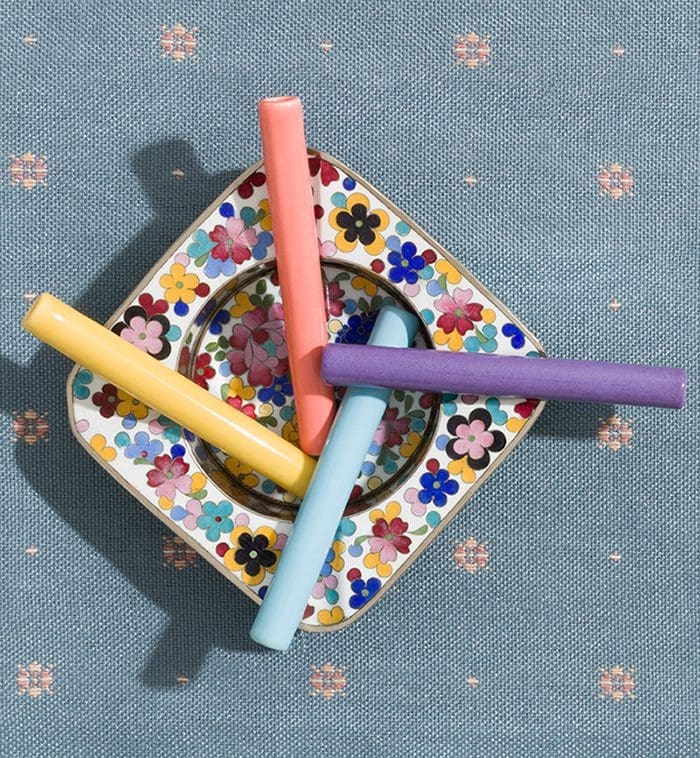
One-hitter
Perfect for when you want a smoke, but don’t want to smoke too much. Of course, we’re biased, but our House of Puff Le Pipe is our fav one-hitter! These slender pipes pack just enough for one or two hits when that’s all you’re looking for or you don’t feel like rolling a joint.
Pipe
Pipes are a basic cannabis accessory for smoking. They come in lots of different shapes and sizes. Since they’re often small, they’re easy to use on the go or keep with your stash.
Recreational Adult-Use cannabis
The legalization of recreational adult-use cannabis is spreading across the US. Recreational use is cannabis consumption for personal enjoyment, rather than strictly for medical purposes. And that is as old as time itself. In states where recreational adult use is legal, you must be at least 21 to legally buy and consume cannabis.
Rolling papers—cannabis facts 101
To roll your own joints, you’ll need rolling papers. These are thin papers, specifically made for joints. Most rolling papers are made from materials like rice, hemp, or wood pulp.
Rolling tray
A fantastic cannabis accessory, rolling trays are designed to make rolling joints easier. Whether you’re a newbie or an aficionado, rolling trays are a joint’s best friend. The unique design of House of Puff’s Nebula Rolling Tray was inspired by the rolling trays found in Amsterdam coffee shops. A good rolling tray keeps your cannabis in one place—preferably in the middle of your rolling papers!
Sativa (Suh·TEE-Vuh)
Sativa strains are derived from sativa plants, one of the main varietals of the cannabis plant. They’ve long been touted in cannabis culture as having more energizing, uplifting effects than indica strains. But the science is evolving on this. So this is another one of those cannabis facts that’s being nuanced. We now know that the combination of cannabinoids and terpenes influence the effects of the strain more than just whether it’s a sativa or an indica.
Sesh—fashionable weed slang
We love a good smoke sesh. That’s fashionable weed slang for a smoking session or a time when you consume cannabis. People usually light up during a smoke sesh. But, if smoking’s not your jam, you can always pop an edible. A solo smoke sesh is great for decompressing at night. It’s also always fun to have a chill smoke sesh with a group of friends.
Shatter
Shatter is a cannabis concentrate that’s usually brittle and transparent. It gets its name because it breaks or shatters like glass. Shatter is one of the most common concentrates and easy to find. It gained popularity initially because it has high THC content, usually upwards of 80%. To consume shatter, you’ll need to dab or vape it.
Stash
Back to the basics of weed slang, anyone who consumes cannabis has a stash. A stash is your collection of cannabis products and accessories.
Strain
Cannabis strains are unique genetic varieties of cannabis. New strains are made by breeding two already existing strains. This is often done to create strains that will provide a combination of the desirable effects of those strains in one. All strains are unique and produce slightly-to-very different effects. Some strains are best for unwinding after a long day of work. Others are the perfect energizing pick-me-up to get you through the day. When you go to buy flower, you’ll likely see strains categorized as sativas, indicas, and hybrids.
Terpenes: one of the most important new cannabis facts
Terpenes are the compounds in every plant that give them their distinctive smells, tastes, and effects. For instance, citrus terpenes are used in a massive amount of everyday consumer products from soap to air freshener because of their energizing effects on us humans. In cannabis, we’re discovering more and more that terpenes work in tandem with cannabinoids. Terpenes may also have health and wellness benefits as well. In cannabis culture, we think of terpenes as being a vital part of cannabis education and consumption.
THC
Short for tetrahydrocannabinol, THC is the primary psychoactive compound in cannabis. So, what does this mean? THC is the most common cannabinoid found in cannabis. It also happens to be the compound that causes the psychoactive high associated with cannabis. There’s different kinds of THC. However, THC usually refers to the Delta-9-THC isomer.
Tip
In weed slang, a tip can be one of two following things:
Filter (see Crutch)
Some people use the term tip to refer to the filter that you put in your joint to keep the cannabis smoke you’re ingesting as pure as possible. You might also hear people refer to what they make their joint filters from as a ‘crutch’. In this sense, a tip is just thick paper card stock that cannabis smokers roll up to use as a filter for their joints. Just be careful about what you use as a tip. We prefer organic hemp tips made specifically for smoking cannabis because we don’t want to inhale toxins that might be in other card stock—like ink or acid.
Joint Holder
Joint holders are one of the most stylish cannabis accessories for enhancing your smoke. And some people call them tips. A joint holder, or tip, isn’t just fancy. They also serve several practical purposes. Joint holders help cool your smoke before it reaches your throat. They keep your fingers from burning. And a good holder keeps ashes from getting on your Chanel.
Tincture
Tinctures are a liquid form of cannabis that can be taken sublingually or used topically. They normally come in eyedropper bottles. If you’re familiar with other herbal tinctures, you’ll know that they’re most often prepared in an alcohol base. But cannabis is fat-soluble. So the body absorbs it more efficiently when it’s paired with oil or butter. Consequently, most cannabis tinctures have an oil base—most common MCT, a liquid form of coconut oil
Topical
Topicals are cannabis products in the form of lotions, salves, balms, and oils. They’re most often used for pain relief. But more and more topicals are popping up on the market solely for skincare.
Trichome (tri·kohm)—The technical cannabis fact you should know
Trichomes are the resin-producing structures on the cannabis leaf. They look like little hairs, and trichomes contain the most cannabinoids in the plant.
Vape/Vaping
Vaping, in cannabis terms, can be 2 different things. Most people associate it with inhaling the vapor from burning liquid cannabis concentrates, sometimes with additional flavoring added. They’re like e-cigarettes. But there are also dry herb vaporizers. These heat, instead of burn, cannabis flower. Vapes are made up of a battery, a cartridge for the liquid or dry herb, and a heating component. They come in different shapes and sizes. But they’re largely small and compact. So they’re easy to carry around.
Weed
Weed is one of the most popular slang terms for cannabis. Weed was first used in the early 1910s, but the term didn’t become ubiquitous until much later in the century. In the 1990s, there was a resurgence of older slang terms, as well as the birth of new ones. During that time, weed became a popular word for referencing cannabis.
